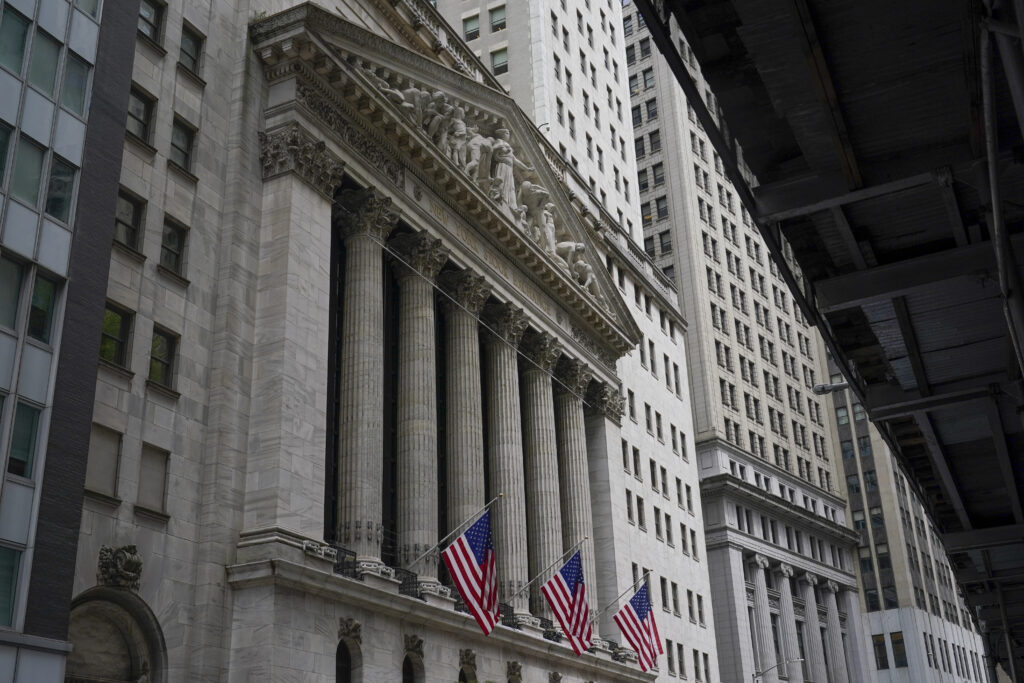Some top CEOs appear to be worried that the economy could be the Grinch that steals Christmas this year. And investors are not pleased. Wall Street futures edged lower Wednesday ahead of new employment and wholesale price data with the Federal Reserve gauging its next step in its fight to cool inflation. The Associated Press has the story:
Stocks waver on Wall Street after 4-day losing streak
Newslooks- NEW YORK (AP)
Stocks wavered between small gains and losses in early trading on Wall Street, leaving prospects uncertain for the market to break a four-day losing streak. The S&P 500 was down 0.2% in the early going Wednesday and the tech-heavy Nasdaq fell 0.6%. The Dow Jones Industrial Average of 30 major blue chips slipped 0.1%. Treasury yields were lower and crude oil prices were higher. European markets were slightly lower and Asian markets closed lower overnight. Campbell’s Soup rose 3% after reporting earnings and revenue that easily beat analysts’ forecasts. More data on inflation is due at the end of the week.
Wall Street futures edged lower Wednesday ahead of new employment and wholesale price data with the Federal Reserve gauging its next step in its fight to cool inflation.
Futures for the Dow Jones Industrials slipped 0.4% and the S&P 500 fell 0.7% just over an hour before the opening bell.
Stronger-than-expected economic data this week has dragged U.S. markets lower on the expectation that the Federal Reserve will be forced to remain aggressive with interest rates during its last policy meeting of 2022.
This week, the Dow has fallen 2.4%, the S&P 3.2%, and the tech-heavy Nasdaq composite nearly 4%.
The U.S. will release data on weekly unemployment data on Thursday and on wholesale prices Friday. The reports do not typically move markets but are receiving elevated attention as they are some of the final data dumps before the Fed meets next week.
On Tuesday, the U.S. releases critical data on consumer prices, the same day the Fed opens its two-day meeting.
Most economists expect the Fed to raise interest rates by a half-percentage point. It has raised its benchmark rate six times since March, driving it to a range of 3.75% to 4%, the highest in 15 years. Wall Street expects the benchmark rate to reach a peak range of 5% to 5.25% by the middle of 2023.
Wall Street, and the Fed, are hungry for any trend that suggests inflation is easing. The Fed’s aggressive rate hikes risk tipping the economy into a recession.
Global shares also slipped Wednesday, with Hong Kong’s benchmark down more than 3%, as Beijing announced it was scaling back its “zero-COVID” policies.
In Asian trading, the Hang Seng index in Hong Kong fell 3.2% to 18,814.82. The Shanghai Composite index was down 0.4% at 3,199.62.
The announcement by China’s National Health Commission rolled back rules on isolating people with COVID-19 and dropped virus test requirements for some public places.
Experts say it might be at least mid-2023 before controls that disrupt travel, trade and industry can be lifted completely, but world markets have gyrated on speculation that major changes might be coming, helping return the world’s second-largest economy to a post-pandemic “normal.”
Tokyo’s Nikkei 225 index slipped 0.7% to 27,686.40 and the Kospi in Seoul gave up 0.4% to 2,382.81. The Shanghai Composite lost 0.4% to 3,199.62, while Australia’s S&P/ASX 200 dropped 0.9% to 7,229.40.
Shares also fell in Mumbai and Bangkok.
China reported its imports and exports fell in November as global demand weakened and anti-virus controls weighed on the second-largest economy.
In Europe at midday, Germany’s DAX and the CAC 40 in Paris each declined 0.6%. Britain’s FTSE 100 was down a slight 0.1%.
U.S. benchmark crude oil was unchanged at $74.25 per barrel in electronic trading on the New York Mercantile Exchange.
Brent crude oil, the international standard for pricing, inched down 10 cents to $79.25 per barrel.
The dollar rose to 137.38 Japanese yen from 136.94 yen. The euro rose to $1.0521 from $1.0468.
Small company stocks also fell, pulling the Russell 2000 index 1.5% lower. The major indexes are on pace for a weekly loss after posting two straight weekly gains.







